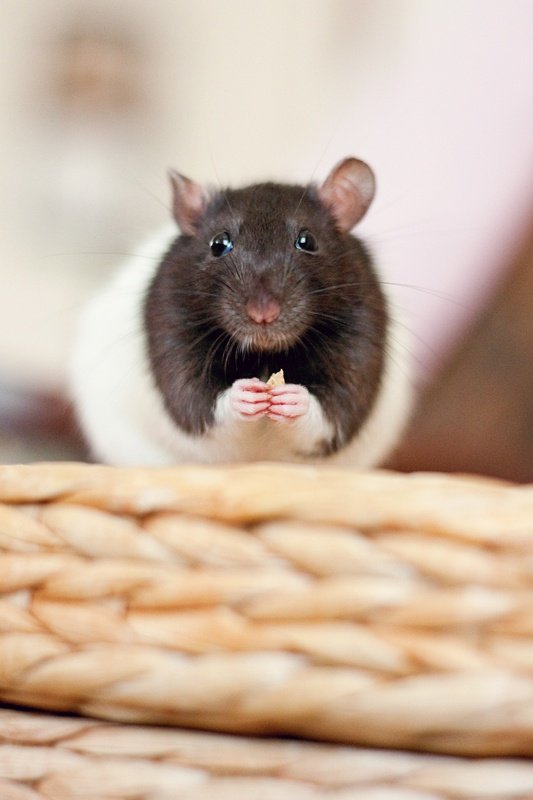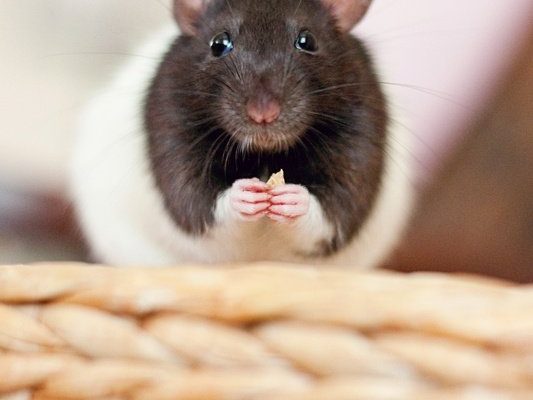
Think of a hooded rat as a tiny explorer. They thrive in an environment that encourages their curiosity and playfulness. In this article, we’ll dive into the ins and outs of their care, focusing on their diet, habitat, and handling tips. So, grab your favorite coffee, sit back, and let’s unravel how to make your hooded rat feel right at home.
Understanding the Diet of a Hooded Rat
When it comes to caring for a hooded rat, their diet is one of the most important aspects. Hooded rats are omnivores, meaning they eat both plant and animal matter. The foundation of their diet should be a good-quality commercial rat food, which you can typically find at pet stores. Look for brands that specify they are made for rats, as these contain the right balance of nutrients.
Aside from commercial food, you can supplement their diet with fresh fruits and vegetables. Just remember, not all human food is safe for them. Some safe options include:
- Apples (without seeds)
- Carrots
- Broccoli
- Oats
Here’s the thing: while it’s fun to treat them to tasty snacks, moderation is key. Too many sugary fruits or fatty foods can lead to obesity and health problems. You might be wondering how much to feed them. A general rule is to offer about one tablespoon of dry pellets per rat each day, plus a few small pieces of fresh fruits or veggies.
Habitat Requirements for Your Hooded Rat
Creating the right habitat for your hooded rat is crucial for their happiness and well-being. They need a spacious cage that allows them to move around freely and engage in natural behaviors. A multi-level cage with ramps and platforms is perfect because it gives them space to climb, jump, and explore.
Choose a cage with smooth bars—this prevents little noses from getting stuck. Aim for a minimum size of 2 feet by 3 feet for one or two rats. Remember, more space is always better, especially if you plan on getting more than one. Hooded rats are social animals and enjoy the company of their own kind.
For bedding, avoid cedar or pine shavings, as these can be harmful to their respiratory systems. Instead, look for paper-based bedding or aspen shavings. Make sure to clean their cage regularly—at least once a week—to keep things fresh and hygienic. Your little friends will thrive in a clean environment, and you’ll enjoy the absence of unpleasant odors.
Setting Up Their Environment
Now that you have the cage sorted, it’s time to think about their environment. Hooded rats love to explore, so adding toys and enrichment is crucial. Here are a few ideas to get started:
- Hammocks for lounging
- Tunnels for climbing and hiding
- Chewing toys to keep their teeth healthy
You can get creative! Even cardboard boxes can provide hours of entertainment. Just be sure to supervise them during playtime to ensure they don’t chew on anything harmful.
You might also want to think about the cage’s location. It’s best to place it in a quiet area of your home, away from direct sunlight and drafts. Hooded rats are quite social and enjoy being around people, so a living room or family area can work well—as long as they’re not in a place where they’ll be disturbed too often.
Handling Your Hooded Rat
If you want your hooded rat to be friendly and well-adjusted, handling them is essential. Start by letting your new pet get familiar with your scent. Spend some quiet time near their cage, talking softly to them while offering treats. Once they seem comfortable, you can start picking them up.
To hold them properly, scoop them gently from underneath using both hands. Avoid grabbing them by the tail, as this can be stressful for them. Instead, allow them to climb onto your hand, which encourages trust.
Initially, it might take a few attempts for them to feel comfortable. Don’t rush the process—let your rat set the pace. They’re curious creatures and will likely start exploring you before long.
Common Health Concerns to Watch For
Just like any pet, hooded rats can have health issues that you should watch for. One common concern is respiratory infections, which can occur if they are housed in damp or dirty conditions. Keep an eye out for symptoms like sneezing, lethargy, or difficulty breathing. If you notice any of these signs, it’s crucial to consult a vet familiar with small animals.
Another issue can be overgrown teeth. Hooded rats’ teeth continually grow, and if they don’t have proper chew toys, their teeth can become too long, causing pain and eating difficulties. Regularly check their teeth and provide appropriate chew items to help with this.
Lastly, obesity is a risk for hooded rats. As mentioned earlier, watch their diet and ensure they get enough exercise with toys and climbing opportunities. A healthy rat is a happy rat!
Bonding With Your Hooded Rat
Building a bond with your hooded rat is one of the most rewarding aspects of pet ownership. To strengthen your relationship, spend time playing with them and letting them explore outside their cage. You might even consider creating a safe play area with tunnels and toys.
You could also consider training them, as hooded rats are quite intelligent. Using treats as rewards can help them learn simple tricks, like coming when called or going through a tunnel. This not only stimulates their mind but also deepens the bond between you.
Remember, patience is key. Every rat has its unique personality—some might be adventurous, while others are more reserved. Let your hooded rat take the lead and enjoy the journey of getting to know your little companion.
Caring for a hooded rat can be a delightful experience filled with fun and companionship. By focusing on their diet, habitat, handling, and health, you lay the groundwork for a happy life together. Remember, they are social creatures at heart and thrive on interaction, so make sure to spend quality time with them.
As you embark on this journey, keep your eyes open for their unique quirks and personalities. After all, each hooded rat has its own story to tell. With a little love and attention, you’ll create a warm and welcoming environment—one where your hooded rat can thrive and perhaps even surprise you with its clever antics. Enjoy every moment with your new furry friend!

